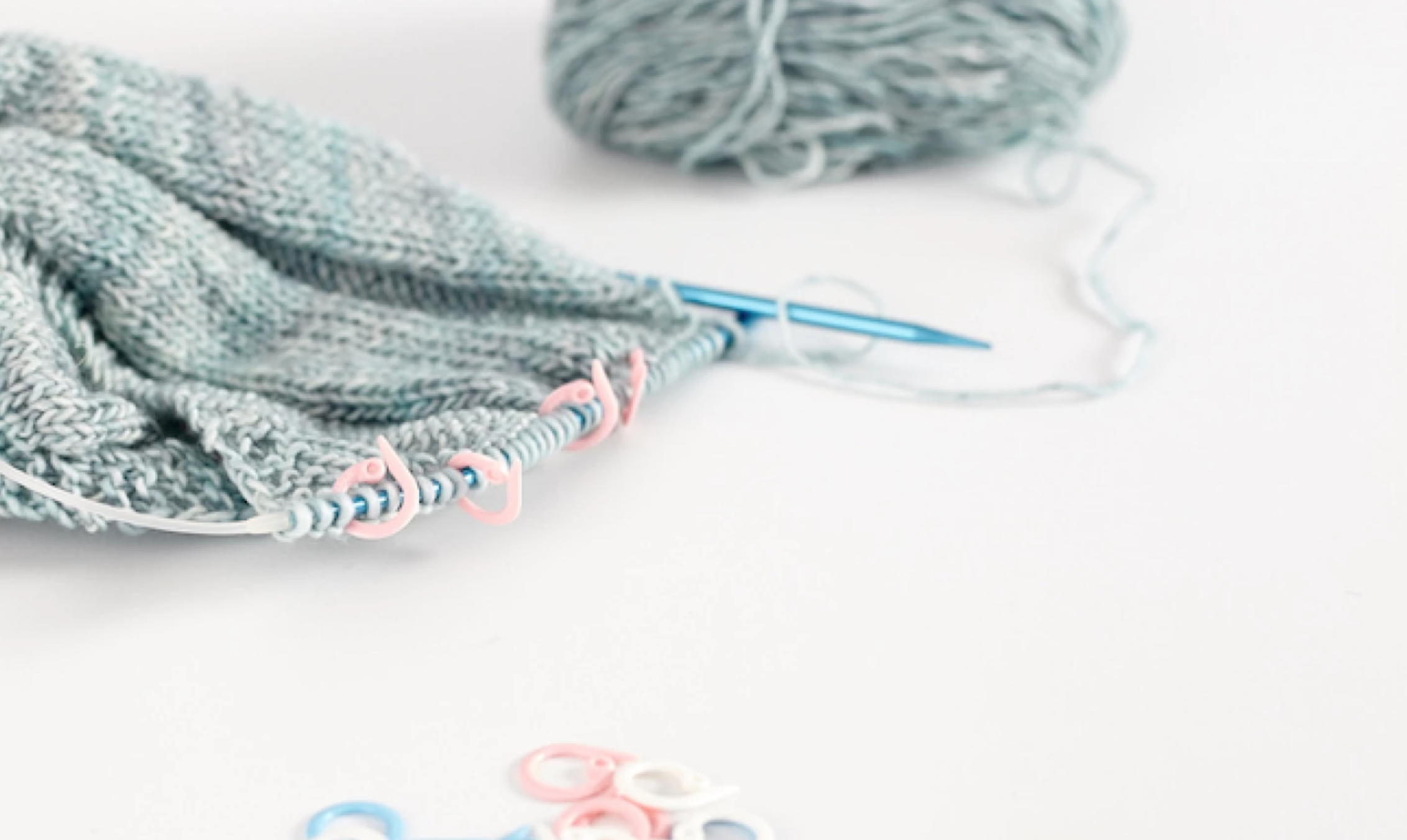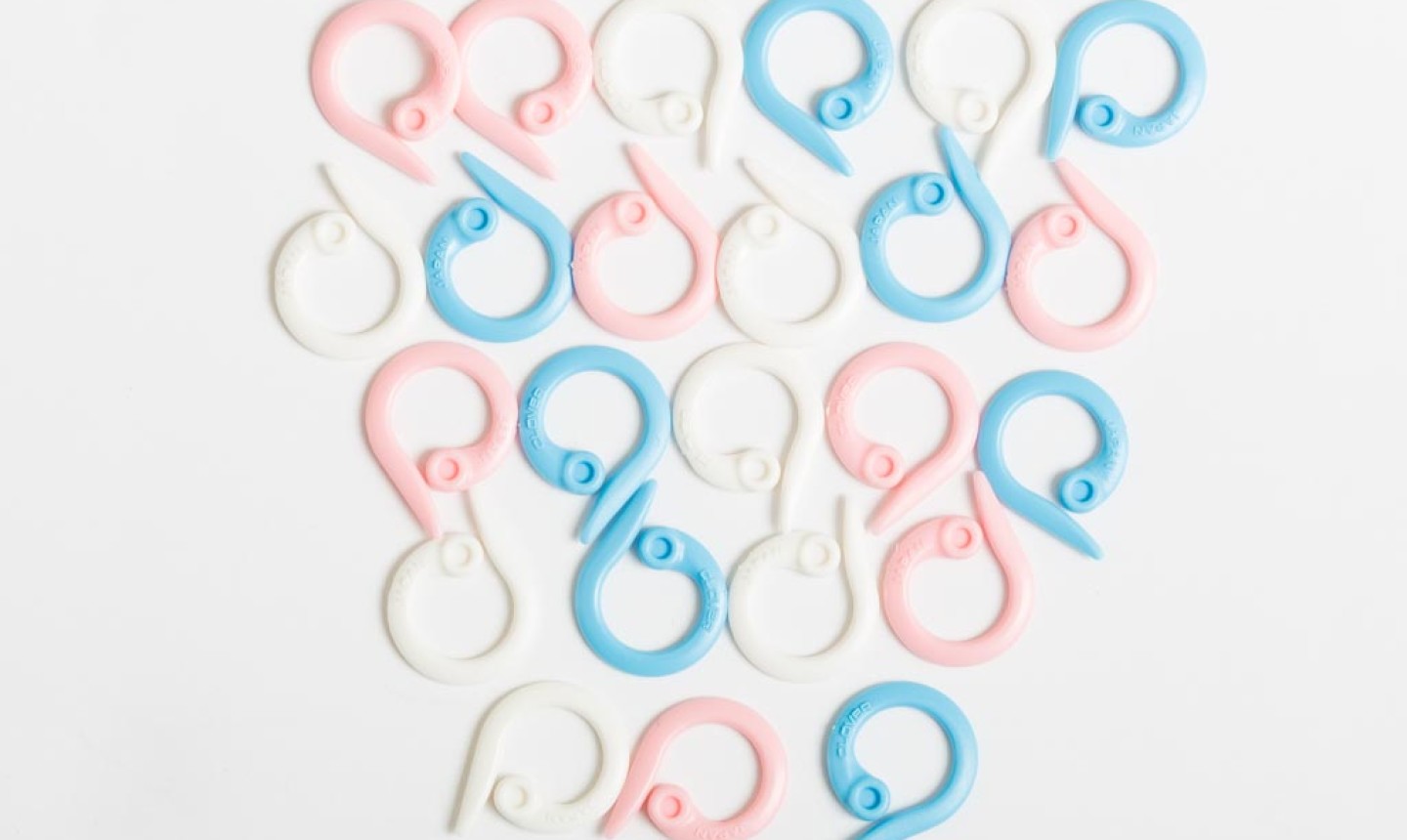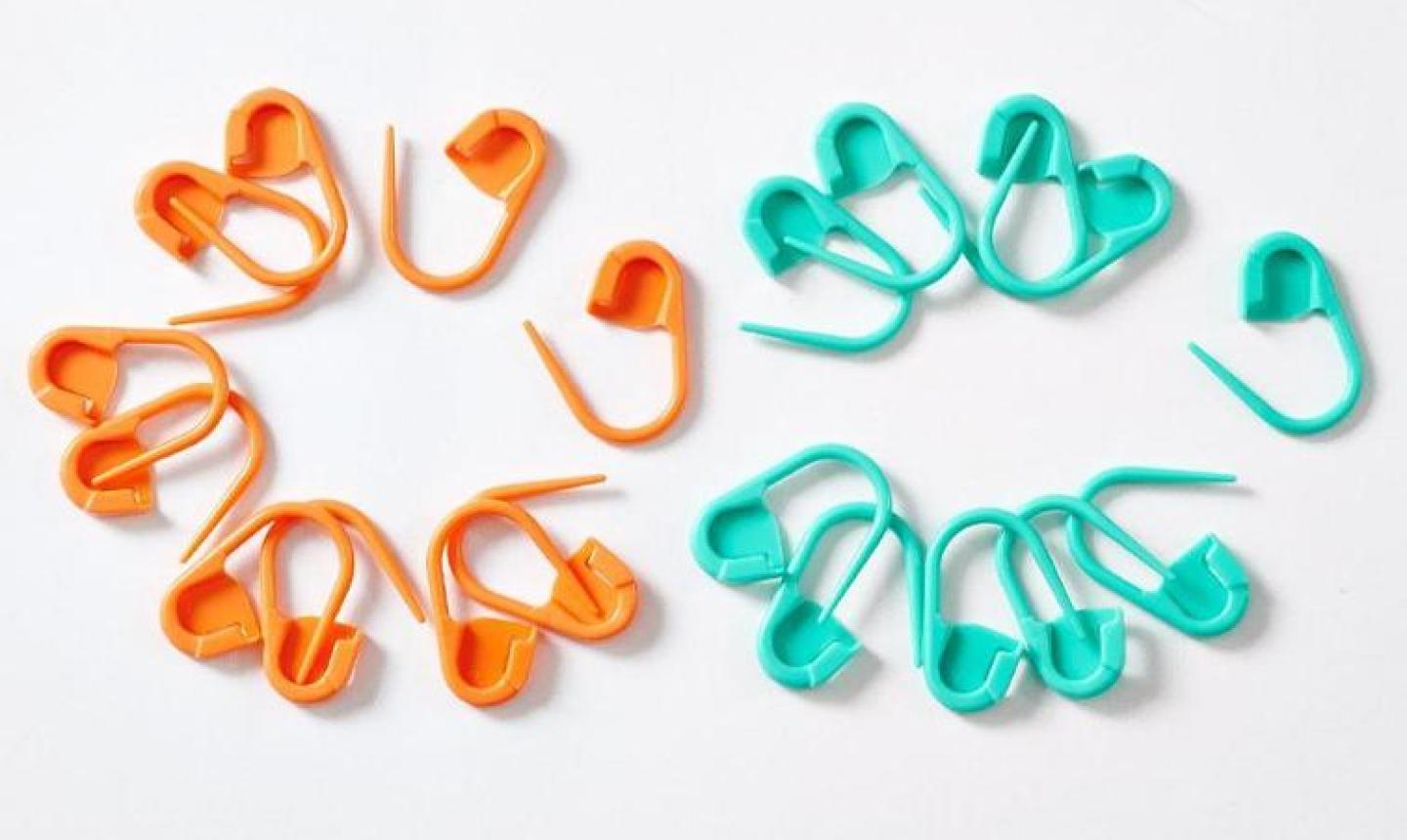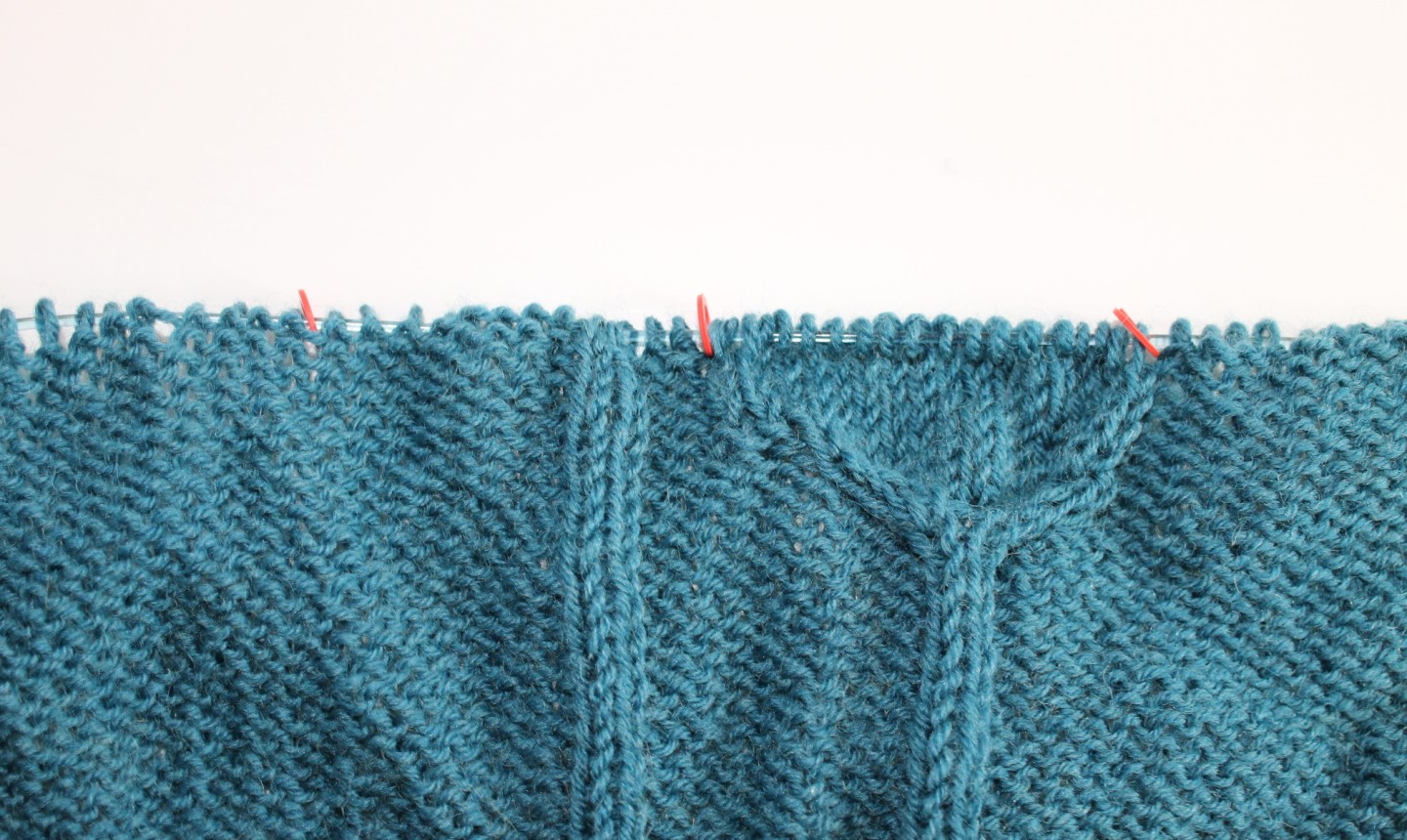
Have you ever busted out your needles and yarn while, say, on the subway, or binging Netflix, or in between two soccer games? And then proceeded to lose your place, lose track of your pattern and basically lose your mind?
Enter: Stitch markers. While these rings might look small, they’re a pretty mighty tool. They can help you keep your place, nail a complicated stitch, remember to swap out colors and more. So you can multitask as much as you like, and never miss a stitch.The DL on Stitch Markers
Stitch markers are small rings, plastic, metal or otherwise (hair tie, anyone?), that you place between stitches to mark an important part in your knitting pattern.

There are two main types: locking and ring. As the names imply, the locking ones open and close with a latch while the rings are a solid circle. You can slide a solid ring marker onto your needles between two stitches. As you knit, you’ll either slip the marker when you come to it or remove it — depending on the pattern. (A word to the wise: you really need to move them as instructed, or else they’re going to become a permanent part of your new scarf.)

Locking stitch markers, on the other hand, have a clasp that makes them removable (phew!). You can also place these markers anywhere, not just on your needle. For example, you could slide the marker through the middle of a stitch, which is handy for dropped stitches, short rows and more. (You can always sub in a locking marker for a ring, but you should never swap a ring for a locking one.) If you crochet, you’re team locking stitch marker all the way.
When to Use Them
1. At the Beginning of the Round
We’ll start here, since it’s the most common use for a stitch marker. When you’re knitting in the round, it’s tricky to tell when a round ends and begins. Unless, of course, you have a stitch marker! Just place it between your first and last stitches. (This is especially clutch when your pattern also requires you to count rounds.)
2. Pattern Repeats in a Color Chart
Color charts can make your head hurt. And the more shades you use, the more confusing it gets. Make your life a little easier by using a stitch marker to note the beginning and end of a color chart repeat. Something doesn’t look right? Stitch markers can help you backtrack, too! Instead of searching the entire row and comparing it to the chart, you can use the markers to break it down into smaller, more manageable sections.
3. Pattern Repeats in Lace
Just like color charts, lace pattern repeats can make your head spin. Section off those repeats with stitch markers and you’ll be able to breathe again.
4. Where to Increase or Decrease
Sometimes patterns have you count stitches before a decrease or increase. It might say: “P18, K2tog, P6.” And maybe that shaping is happening in the same place for several rows. If that’s the case, P18, then place a marker. You won’t have to count those 18 stitches every time, and the stitch marker will let you know when it’s time to decrease. Win!
5. Where to Begin Cables and Other Special Stitches

If you’re getting all fancy with cables or special stitches, you and markers are going to be fast friends. You might slip one on where you’re switching from a reverse stockinette stitch to a circle cable. This way you can chill out and work the same stitch over and over again until you reach that marker, and then it’s time to pay attention and refer to the cable chart.
6. When Making Amigurumi
Amigurumi is a fancy word for the Japanese art of making knit or crocheted dolls and animals. Many parts of the dolls are knitted in the round, so it’s helpful to use a stitch marker to note your starting points. Remember, since this is crochet, it has to be a locking marker!
7. To Mark a Reference Point
Sometimes a knitting pattern says to work stockinette for 1″, for example, from a certain point. And sometimes it’s difficult to see where that certain point is. Instead of guessing (been there!), throw in a marker and measure from there.
8. To Mark Multiples of Stitches
Patterns might also have you count large numbers of stitches at a time. Instead of counting off ten, twenty, or even more stitches, mark the multiples with stitch markers to make your life easier.
Sold? We thought so. Bring on the distractions!

I have knitted for far to many years without these markers, I've always used other things I have in the house I've saved and recycled such as, different coloured bread ties, different coloured bobbie pins, coloured paper clips and different coloured coated thin wire. If you don't have any markers, can't find any or simply don't have enough, see what you can use in the house, cheers Petrina.
I rediscovered knitting in my retirement and also weaving!! My mom died and I found tons of yarn and I took them when no one else wanted them. I started making our traditional mitt strings that helps you work, play, and or travel to use when it gets too cold until everyone in my large family had one...then went to making our traditional baby packing duffie (our Inuit word for our women's belt we tie around our waist so the baby does not fall out of our parka), to knitting socks. When my children were babies, I knitted to save money. Now I knit for pleasure and what new and wonderful things they have made since my early days of knitting!!! Wow, needles that are caught together so you can knit in the round, beautiful stitch markers, lighter needles, tiny scissors that fit in a small bad, and so on!!!! Yes finding ways to make knitting easier with stitch markers is fun and enjoyable and easier, Defiantly stitch markers are a great tool!!